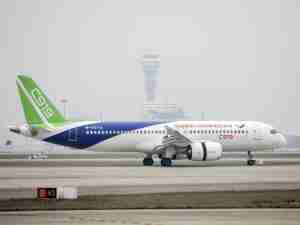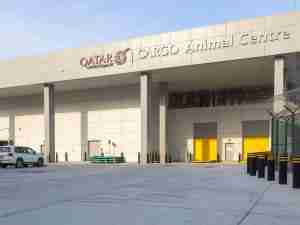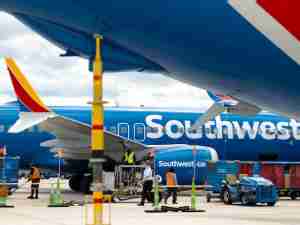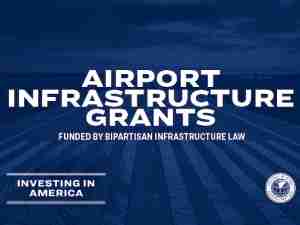Fitch Ratings has assigned an ‘A’ rating to $250 million in State of Hawaii’s Airport System Customer Facility Charge Revenue Bonds series 2017A. The bonds are being issued by the Department of Transportation. The Outlook on the bonds is Stable.
The rating reflects a strong O&D market in Hawaii supporting robust rental car transaction day performance and CFC collections at the state-wide Consolidated Rental Car Facility System (Conrac). Strengths consider the broad CFC collection authority across five main Hawaiian airports, strong coverage at existing transaction levels, favourable progression of the construction program, and conservative covenants and reserves. Strong rating case coverage of 2.0x (excluding rolling coverage) and leverage of 4x to 5x support the rating, taking into account a future borrowing to fund the expected remaining project costs.
KEY RATING DRIVERS
Multi-Airport CFC Base: The Conrac benefits from average annual transaction day growth of 8.5% since CFCs were first collected in 2008, rising to 15.2 million in fiscal 2016 across the multi-airport system. Transactions are supported by strong domestic and international visitor arrival levels across all Hawaii islands. The airport system’s ratio of rental car transaction days to O&D enplaned passengers (over 120%) is high relative to other facilities due to strong Hawaiian rental demand. The rental market benefits from balanced and diverse rental car operator presence, with no one rental group representing more than 39% of the market by transaction days.
Strong Concession, Ratemaking Ability: Fitch views the 30-year concession and lease agreements, effective upon project completion and extending through the life of the bonds, as providing considerable stability to the project. The Department has collected CFCs since 2008, and has the authority to increase the rate at any time as necessary, partially mitigating the narrowness of the CFC revenue stream. The moderate CFC rate of $4.50 compares favorably rates at other facilities and no increases are anticipated to cover projected Conrac costs. Under the agreement, should CFC revenues be insufficient to cover 1.15x debt service, signatory rental car companies must also pay a minimum annual required deficiency payment. Rental car companies are responsible for project operating costs but can be reimbursed from surplus CFCs after debt service.
New Facilities Under Construction: The facilities will be new upon completion in 2018 for Maui and 2020 for Honolulu, and are currently at 35% and 10% completion stage, respectively. Half of the overall project costs are expected to be funded with cash CFC collections, with initial funding provided by past CFC collections and an interim loan. Additional facilities may be constructed in the future at other Hawaiian airports (Lihue, Hilo, Kona), but are expected to be more limited in scope, limiting the need for additional borrowing in the future. Future funding for capital needs is expected to be sourced from net cashflows starting in 2019 provide additional comfort as to the ongoing state of repair of facilities post-completion.
Conservative Debt Structure: The project’s debt structure is conservatively established, featuring senior, fixed-rate debt with a flat amortization profile. Structural features are strong relative to similar rental car credits, including a 1.4x rate covenant (includes 25% rolling coverage), MADS-based additional bonds test, and cash funded reserves. Obligations under the bond documents are incorporated into the rental car concession agreement.
Financial Profile: Financial metrics are relatively strong for a CFC transaction with fiscal 2016 CFC revenues being sufficient to provide 2.0x or better cash DSCR coverage on all expected program borrowings. Fitch’s rating case DSCR averages 2.7x through 2023 (excluding rolling coverage) which contemplates an 8% drop in transaction days and related revenues, and no increase in the CFC rate. Leverage is initially moderate at 4x, rising to the 5x range by 2023 under the rating case as 2019 bonds come online.
Peers: The Hawaii Conrac system ranks among the largest for a rated financing in terms of CFC transactions and collections. Comparable Fitch-rated peer Conrac facilities include Massachusetts Port Authority (rated ‘A’/Stable Outlook) and Charlotte (‘A’/Stable Outlook). The projects have similar leverage levels of 4x to 5x. Massport, Charlotte, and Hawaii all benefit from coverage levels at or above 2x (excluding coverage account), with Charlotte’s leverage being slightly lower.
RATING SENSITIVITIES
Future Developments That May, Individually or Collectively, Lead to Negative Rating Action:
- Coverage levels falling below 1.7x resulting from a significant drop in rental car transactions without a corresponding increase in CFC rate.
- Additional future borrowings that increase leverage above 7x for a sustained period, without corresponding increases to net revenues.
Future Developments That May, Individually or Collectively, Lead to Positive Rating Action:
- While not likely in the near term, sustained outperformance of CFC collection as well as successful completion of construction on the two facilities and greater clarity on financing plans for other Hawaiian airports.
TRANSACTION SUMMARY
Proceeds of the Series 2017A bonds will defray costs of design, development and construction of consolidated rental car facility projects at Honolulu and Kahului airports, operated by the state’s Department of Transportation Airports Division. Bond proceeds will also fund the Rolling Coverage Fund Requirement (cash funded at 25% of MADS at closing) and the Debt Service Reserve Fund Requirement (equal to 1.0x MADS), as well as covering costs of issuance. The bonds are fixed rate with level debt service of roughly $15 million through final maturity in July 2047.
The overall $901 million Hawaii Conrac Program, with approximately 50% to be funded outside of borrowing sources, includes several rental car related projects within the Hawaii Airports System, with all the main construction projects under contract. Major program elements include $438 million for a Conrac at Honolulu (currently 10% complete and expected to be substantially completed by June 2020); and $436 million for a Conrac at Kahului in Maui (currently 35% complete and expected to be substantially completed by October 2018). The project also includes $21 million for land acquisition at Lihue for potential future Conrac development. The Department has expended approximately $205.1 million on the Conrac System through December 2016. The Department estimates the remaining cost to complete the Conrac System is $696.3 million given the executed contracts in place.
The Department operates and maintains 15 airports across Hawaii. The five primary airports, which account for 98% of system traffic and drive rental car demand, are Honolulu (Oahu), Kahului (Maui), Hilo and Kona (Hawaii), and Lihue (Kauai). All primary airports provide facilities for interisland flights (in-state flights among the airports in the Airports System) and direct overseas flights to the continental United States. In addition, international flights are available to the Pacific Rim from Honolulu; to Japan from Kona; and to Canada from Lihue and Kahului via preclearance arrangements. Honolulu and Maui are the largest and busiest airports; although Honolulu has the most visitor traffic, Maui has the most rental car transaction days.
Historical passenger traffic has demonstrated volatility during economic cycles evidenced by enplanement losses from 17.5 million in 2008 to 14.9 million in 2009. Since that period, traffic levels have recovered steadily increasing by 16% and current visitor levels have reached record highs. For fiscal year 2016, total enplaned passenger counts increased from 16.7 million in fiscal 2015 to 17.2 million due to higher overseas traffic.
Rental demand has also been strong in recent years, driving robust CFC revenues. In fiscal year 2016 the system-wide number of rental car transaction days was 15.167 million, a 5% increase over 2015. Kahului accounted for 5.1 million transaction days (1/3 of total vs having 1/5 enplanements); Honolulu had 58% of system-wide enplaned passengers, but only 29.7% of system-wide rental car transaction days. This reflects Oahu’s visitor mix, convenient transportation options in Waikiki and other factors.
While Fitch typically considers rental car transactions to potentially be more volatile than visiting enplanements due to the discretionary nature of the service, in Hawaii, historical transaction days have largely tracked with visitor arrivals. This is due to the unique nature of demand in the Hawaiian market, which features a high concentration of leisure travellers with extended trip durations visiting geographically dispersed sights, necessitating a vehicle.
The Department has charged a CFC since 2008, and the CFC rate has been $4.50 since 2010 (excluding 2012, when CFCs were not charged for one year). Compared to rates charged at other US Conrac facilities, Hawaii’s CFC is relatively low. When considered together with other costs associated with visiting the Hawaiian islands, price elasticity due to nominal changes in the $4.50 CFC rate is expected to be low. Fitch views favourably the department’s CFC ratemaking ability, as Department has the power to adjust the CFC rate without rule- making or legislative approval. The Department is authorized to increase the CFC rate and to require payment of an additional Minimum Annual Requirement Deficiency by the RACs that will be sufficient to pay debt service on the Bonds and to pay the costs of operation, maintenance and repair of the Conrac. Based on both sponsor projections and Fitch sensitivity scenarios, the CFC rate does not need upward adjustments to meet project obligations
CFC revenues grew 8.5% from 2008 to 2016, reflecting an increase in the CFC rate in 2010 but also the addition of off-airport transaction days to the revenue base starting in 2015 with the new lease agreement. 2016 saw a 5.0% increase in CFC revenues year over year, tracking transaction day growth of 5.2% and outperforming visitor arrival growth of 2.5% for the same year. Fitch views these levels of CFC collections as providing strong support to the project, with 2016 CFC revenues being sufficient to cover future expected debt obligations by 2.0x on a cash basis. Existing CFC fund balances of $216 million further support the project, with balances expected to draw down during construction before building up to the $100 million range by 2022.
The $901 million Conrac Program is a major component of the Department’s Airports Modernization Program launched in 2007. Sources of funding include $76 million in outstanding EB-5 loans (8%); the current 2017 bonds (25%); additional CFC bonds to be issued in 2019 (14%); and existing and future paygo CFC collections (52%). Fitch views favourably the progress made to date on both facilities, as well as the build-up of capital improvement and operating reserves post-completion to ensure ongoing maintenance and development of Conrac facilities.
Fitch Cases
Fitch’s Base Case adopts the sponsor’s assumptions, which were viewed to be conservative. In Fitch’s Base and Rating Cases, the $4.50 CFC rate is held constant. The Base Case assumes growth of visitor arrivals and rental car transaction days consistent with historical averages; borrowings are assumed to take place in 2017 and 2019, and rolling coverage is applied at 0.25x annual debt service. The Rating Case follows similar assumptions, but applies an 8% decline in transaction days and visitor arrivals in 2019, followed by recovery at base case rates. This represents a slightly more modest reduction in traffic than was experienced during the most recent recession, as future recessions are expected to be less severe.
In the base and rating cases, coverage remains strong, averaging 2.92x (without coverage account) and 2.72x respectively. By 2023, leverage is 5.2x in the base case and 5.6x in the rating case. The leverage calculation is conservative in that it gives no credit for any build-up of excess CFC revenues as an offset to debt outstanding; leverage may fall more quickly on a net basis should excess CFC revenues accumulate over the forecast period.
SECURITY
The bonds are special limited obligations of the State, payable solely from and secured solely by the CFC and payment by the RACs of the Minimum Annual Requirement Deficiency upon project completion at each airport.











